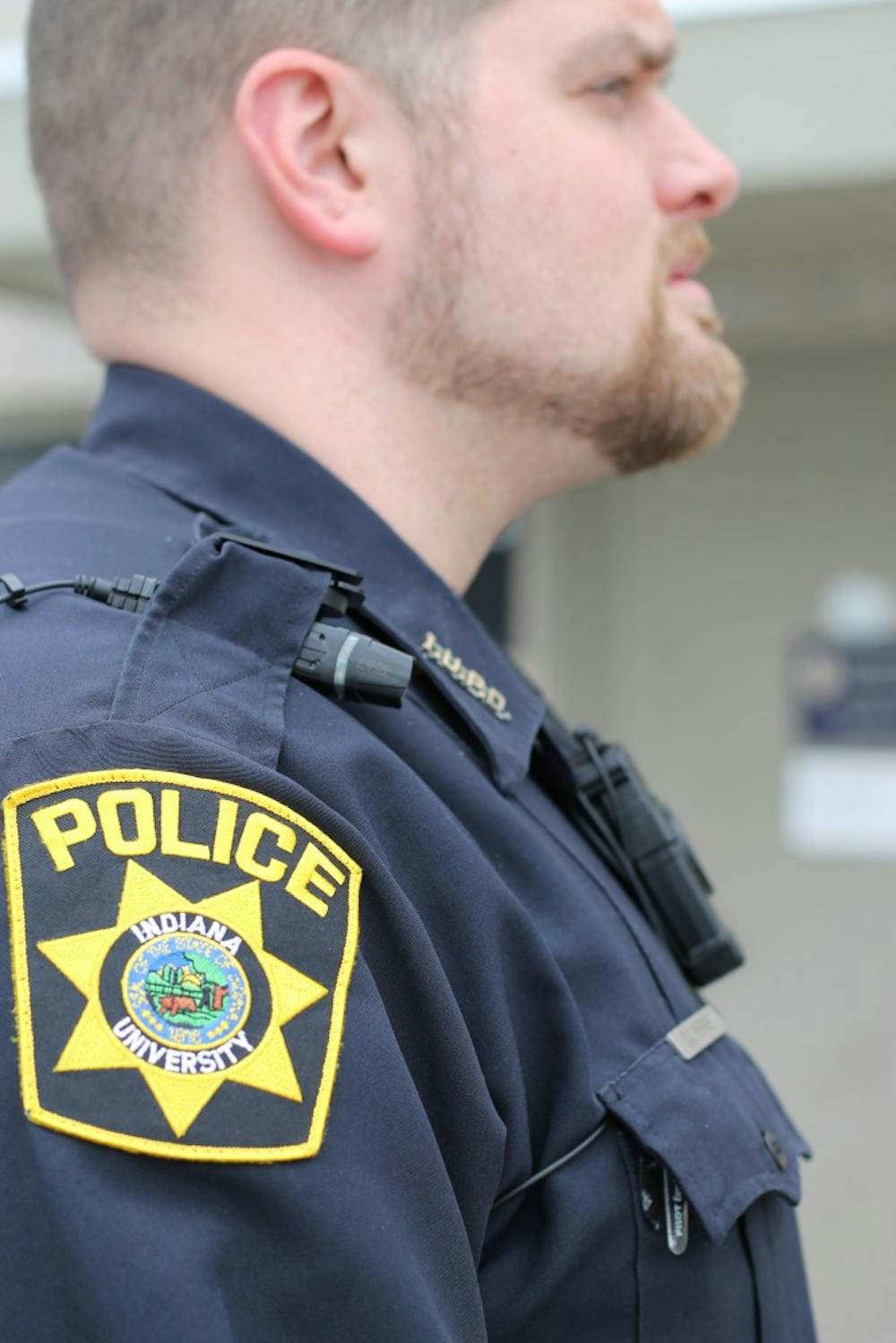The IU Police Department released plans Wednesday to implement body-worn cameras. Though students likely won’t see the devices on officer uniforms until the spring semester, the process has reached the beginning of the end.
A Body-Worn Camera Evaluation Committee submitted an official recommendation report March 14, after 15 months of investigating the risks and benefits of the tool.
Though body-worn cameras had been the topic of informal IUPD discussion for years, the formal committee consisting of students, police officers, attorneys, faculty with expertise in criminal justice and IU’s Chief Privacy Officer and Superintendent of Public Safety was not formed until shortly after the shooting of Michael Brown.
The committee, which formed in April 2015, conducted surveys and focus groups, field-tested the cameras and consulted with other departments to determine the best course of action.
“Because of the environment we have today in policing across the country, and a desire for communities and police agencies both to be more transparent with each other, I think body-worn cameras will be a valuable tool to help us maintain trust and build positive relationships with our community,” IUPD Deputy Chief Doug Johnson said.
The committee found in its research that stakeholders like students and faculty tended to say the relationship between IUPD and the community is healthy, and there was no immediate demand for body-worn cameras.
“Not to say something terrible couldn’t happen, but we’ve not really been one of those police agencies that has stirred lots of controversy in the past,” said Bob True, IU interim superintendent of public safety.
True said he thinks the campus community will see a positive police force through the lenses of the body-worn cameras.
“If we don’t, it’s there to show exactly what did happen,” he said.
Instead of documenting from the start of an officer’s shift to the end, as some departments operate, the committee determined IUPD officers should only record during most interactions with members of the public, using their professional judgment to determine when to turn off their cameras. It will depend on whether officers believe the interaction is purely casual or if they need to protect privacy and confidentiality interests.
In addition, though notifying people that they are being recorded is not usually required by law, the committee said officers should notify people if reasonably possible.
Exceptions include conducting lawful investigations, searches or arrests, responding to emergencies and handling interactions in which the officer discerns notification would likely escalate the situation.
“Some people say the officers won’t like it because it’s going to show them doing wrong or it’s going to show what they really do,” True said. “But what we’ve found with the mobile video is that it actually shows that they try to do a good job, and it’s actually even protected them a few times.”
Years ago, he said, there was an incident in Indianapolis in which a person accused an officer of breaking his vehicle’s tail light during a traffic stop. However, in-car camera footage revealed both tail lights were intact for the entirety of the interaction.
Body-worn cameras would serve a similar purpose, holding both officers and the public accountable to video evidence.
“Situations where the police are involved are so fluid that it’ll never be a perfect view,” True said. “But at least it’ll be a document of what happened.”
According to Johnson, the video captured on body-worn cameras would also be an important training tool for IUPD and other departments who could learn from IUPD’s practices.
In accordance with Indiana state law, the department will hold video at least 190 days and will edit it so that individuals and the media may legally view it.
The department does not yet understand how much work that will be, True said. They may handle the video with current staff, figure out better ways to do it or dedicate a staff member to managing video and storage.
Storage is the big-ticket item in the initiative, True said.
According to Margie Smith-Simmons, an IU spokesperson, the committee estimated a cost of less than $200,000 to deploy cameras across all campuses. The cost of anticipated maintenance and replacement is currently being determined.
She said the funding was a special appropriation from the University and was approved by President Michael McRobbie, as the initiative involves multiple campuses.
“We’re willing to accept the financial costs, understanding that what we gain back in capability and in measures of trust and transparency are worth it,” Johnson said. “It shows that the University is dedicated to open, fair, professional and transparent policing.”
Before the cameras can roll out, first on the IU-Bloomington and IU-Purdue University Indianapolis campuses, IUPD must select and purchase the equipment and storage, set up software, determine specific officer guidelines and train officers.
Smith-Simmons said the goal is to begin using body-worn cameras by the spring semester, but the timeline depends on many variables.
Looking forward, body-worn cameras will be assessed annually and face a comprehensive review after five years. Yet they are only one piece of a larger police-public relationship.
“We’re not going to look at this as the only means of transparency for the IU Police Department,” True said. “We try to build friendships and connectivity with lots of groups around the campuses. We try to be as outgoing as we can with information. We’re still going to be looking at other ways to be more transparent, besides the fact that we’ve got cameras hanging on our uniforms.”






